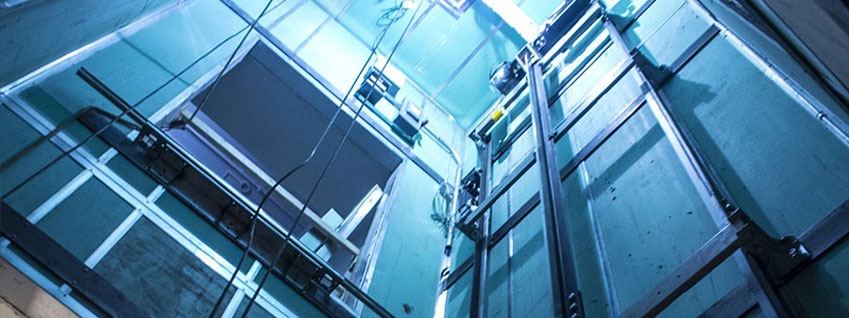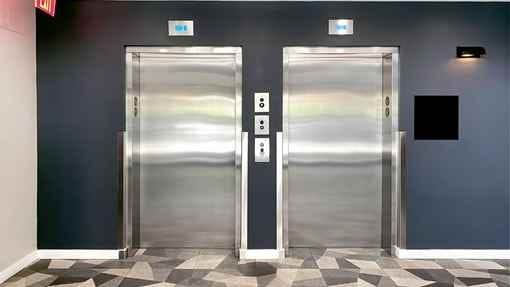We Maintain Lifts with Precision: Ensuring Safety And Security and Performance
We Maintain Lifts with Precision: Ensuring Safety And Security and Performance
Blog Article
Exploring the Globe of Lifts: Usual Issues Dealt With by Various Lift Mechanisms
As we navigate through the vertical transportation systems of modern structures, lifts attract attention as an essential component of our lives. Nonetheless, behind their smooth operation exists a globe of detailed systems that can in some cases come across difficulties. From hydraulic elevators to traction systems and machine-room-less layouts, each lift type comes with its set of typical concerns. Comprehending these challenges is important for ensuring the smooth functioning of these important systems. Allow's discover the intricacies that underlie the operation of elevators and the potential concerns that can occur, dropping light on the intricate web of lift mechanisms.
Hydraulic Elevators
Hydraulic elevators, usually chosen for low-rise buildings, make use of fluid stress to control the activity of the lift automobile (lift repair companies). This mechanism entails a hydraulic pump pushing oil into a cylinder, creating the elevator to relocate in the preferred direction. While hydraulic lifts are known for their smooth and peaceful procedure, they do come with their own set of usual problems
One prevalent trouble with hydraulic lifts is oil leak. The seals in the hydraulic system can wear with time, leading to oil infiltration. If left unaddressed, this not just produces a mess but can also influence the elevator's performance. In addition, concerns with the control system, such as faulty valves or a malfunctioning pump, can create interruptions in the lift's movement.
Normal maintenance and prompt repair services are important to guarantee the smooth performance of hydraulic elevators. By addressing these typical issues proactively, building proprietors can decrease downtime and make certain the safety and security and effectiveness of their vertical transportation system.
Traction Lifts
When considering upright transport systems in structures, one more common kind other than hydraulic elevators is the traction elevator. Grip lifts run making use of a system of ropes and counterweights that move the elevator cars and truck by gripping onto the hoist ropes. This mechanism enables smoother and much faster upright transportation contrasted to hydraulic systems.
Among the usual concerns faced by grip elevators is rope wear. The constant movement of the ropes within the grip system can lead to tear and use with time, potentially causing the lift to breakdown or come to be hazardous for use. Regular evaluations and maintenance of the ropes are vital to make certain the lift's appropriate performance and security.
Another issue that traction elevators might encounter is connected to the control system. Problems with the control system can lead to issues such as unpredictable activity, delays in action times, and even complete shutdowns. Regular screening and maintenance of the control system are essential to stop such issues and guarantee the elevator's reliability.
Machine-Room-Less (MRL) Lifts

Among the essential elements of MRL elevators is the small gearless traction device that is mounted within the hoistway. This maker effectively drives the lift cars and truck without the demand for cumbersome devices discovered in typical traction elevators. Furthermore, MRL lifts generally utilize a weight system to balance the auto, more improving their power performance.
In spite of their benefits, MRL elevators might encounter obstacles connected to repair and maintenance as a result of the restricted room for tools installment. Access for servicing elements within the shaft can be limited, needing specialized training for service technicians. Correct upkeep routines and normal evaluations are critical to ensure the continued smooth operation of MRL elevators.
Overloading and Weight Restriction Issues
Overwhelming and weight limitation issues are crucial issues in elevator procedures. Lift suppliers design lifts with particular weight capacities to ensure guest security and equipment longevity.
When lifts are strained, it places extreme pressure on the motor, cable televisions, and other parts, possibly triggering break downs or malfunctions. Safety systems such as sensors and overload sensors remain in area to avoid elevators from relocating if they find excess weight. Furthermore, surpassing weight limitations can lead to raised power usage and wear and tear on the elevator system.
To alleviate overwhelming problems, building supervisors ought to prominently display weight restrictions in elevators and educate passengers on the relevance of sticking to these constraints - lift repair companies. Routine upkeep checks by qualified technicians can likewise help make certain that elevators are operating within secure weight specifications. By attending to overloading and weight limitation problems proactively, structure proprietors can improve lift safety and effectiveness
Electric System Failures
Surpassing weight limitations in lifts can not only cause mechanical problems but also potentially contribute to electric system failures within the lift facilities. Electrical system failings are an important problem in lift operation, as they can cause unexpected shutdowns, breakdowns, and even security risks. One common electric concern is the getting too hot of parts as a result of too much existing circulation brought on by overloading the lift past its ability. This can result in harm to the electric motor, control, or circuitry systems, her explanation resulting in costly fixings and downtime.
Furthermore, power surges or fluctuations in the electrical supply can likewise interfere with the lift's operation, affecting its efficiency and safety and security. These electrical disturbances can damage sensitive lift parts such as control board, circuit card, or sensors, leading to system failings. Routine maintenance and inspections are essential to determine and attend to prospective electrical issues promptly, guaranteeing the effective and risk-free operation of lift systems. By sticking to weight limits and performing routine electrical system checks, structure proprietors can mitigate the threat of electrical failures in elevators.
Final Thought

Hydraulic lifts, usually favored for low-rise buildings, use fluid pressure to control the movement of the elevator automobile.When taking into consideration vertical transportation systems in buildings, another common type apart from hydraulic lifts is the traction elevator. Grip lifts operate using a system of ropes and counterweights that move the lift auto by gripping onto the hoist ropes. Unlike conventional lifts that need a different device room to house the equipment, MRL lifts incorporate many of the elements within the shaft, getting rid of the requirement for a devoted device area.In final thought, lifts deal with common concerns such as hydraulic malfunctions, traction system failings, and electric blog here system troubles.
Report this page